Get closer to the artist! Experience the power of real paintings! Even in this age of screens and AI, this is what we want. The power of real paintings. And the National Gallery in London is doing much to share the joy in its 200th anniversary year, lending out its most beloved works. Masterpieces from the collection are doing the rounds across the nations and regions. Botticelli is in Cambridge, Vermeer is in Edinburgh. Other collections are following suit. In September, work by arguably the world’s favourite artist is coming to the National Gallery in the form of a new show, Van Gogh: Artists and Lovers , featuring the one and only Starry Night, lent from the Musee d’Orsay. Have a look at the trailer. We are in for a treat!
Starry Night over the Rhone 1888
One of the highlights of the show is Starry Night over the Rhone. Van Gogh painted it by the side of the Rhone in Arles on a cloudless September night by the light of a street lamp. For most of its life, it has been hanging in Paris, but before it comes to London, it has left the Musee d’Orsay for a return visit to the Fondation Van Gogh in Arles, as the centrepiece of a major exhibition there, Van Gogh and the Stars. If you happen to be visiting Provence between now and September, I urge you to check it out before the painting moves to London. The exhibition it is built around is different, cheaper than it will be in London (just E10 for adults, and E3 for anyone under 18), and extremely inventive. To understand what this French show is doing, it might be easier at first to explain what it does not do.
It does not deal with the biography of the artist. There is only one other Van Gogh painting included. It does not survey the work from other close colleagues; Gauguin, say, or Cezanne. This is not a summary of Impressionism or even others who were working at the same time such as the Nabis.
Van Gogh et les Etoiles is one of those ‘idea-driven’ shows which the French seem to love, and for which one imagines the curator, or team of curators, has got together over a long night alongside several bottles of red, and said “Imagine!” What will you see if you go there?
There are lots of pictures inspired by stars, including wonderful 19th century pastels of the newly discovered Milky Way, and a 1989 drawing by Caroline Corbasson which reveals the sky, (enhanced by a telescope to reveal deep sky objects) which hung over Vincent on that starry, starry night. Here it is.
The exhibition then turns to look at the phenomenon of the street light, whose reflections across the Rhone Vincent painted to match the light from the stars. So there are pictures of street lights on a rainy wharf in Ostend, and street lights illuminating Lake George, in a marvellous painting by Georgia O’Keeffe’s. There is even a sequence of photographs by Charles Marville, who was commissioned to document some of the 33,000 new gas lamps installed by Baron Haussmann across Paris between 1853-1870. Van Gogh would have been aware of this urban upheaval brought on by the arrival of gaslight.
Throughout the exhibition there is an exegisis of night itself. I particularly loved this sculpture by the Lebanese artist Charbel-Joseph H. Boutros of a marble ‘box’ which opens on a hinge, rather like a book.
Boutros took the block to a forest in the dead of a moonless night. In each of its interior parts is a carved out void, which when closed contains a cubed centimetre of space. In the forest, he opened up the box and let ‘night’ infiltrate the void. Then he closed the block, like a book. The result is that a cubed centimetre of a specific ‘night’ is within the marble block. I was so taken by this that I dashed over to my husband and dragged him across the gallery to see it. He thought it was ridiculous, and said so. It’s not for everyone, this show. It is very removed from the normal chronological, biographical or genre-led index that normally guides an exhibition of this scale in the UK. But I thought it was witty and playful as well as very thought-provoking.
The show contains a wonderful 1864 pastel by Jean-Francois Millet, the Flight to Egypt, which its thought Vincent may have used as inspiration for his pair of lovers at the bottom of the picture. There are drawings by a Lord Rosse, who was obsessed with the cosmos, and drew spiral galaxies in around 1850, and then, because it sort of works, there are pieces by Anselm Kiefer, who also loved a spiral galaxy and produced a vast book made of lead which is full of them. Plus, a photograph by the German artist Gloria Friedmann called The Images of the World, which juxtaposes a picture of the night sky alongside one of a coffee cup which looks a bit like the night sky. I am not really a betting person but frankly I will put money on the fact that you would never see a photograph of a coffee cup on the walls of the National Gallery.
The exhibition includes work by artists who I have never heard of, plus famous names such as O’Keeffe, Munch, Kandinsky, Miro and Tony Cragg, whose crescent moon made up of shiny, glistening junk is shown here.
The show encourages you to go back and look, again and again, at the masterpiece in the middle of it. As Vincent himself once wrote in a letter to his brother Theo; “you should know that I’m in the middle of a complicated calculation that results in canvases done quickly one after the other, but calculated long beforehand (his italics). And look, when people say that they’re done too quickly, you’ll be able to reply that they looked at them too quickly.” I found myself looking at Starry Night for a long time.
Has it put me off going to the National Gallery? Of course not. But it means that when I do go to the London Van Gogh show, which costs more, will be far more crowded, and will probably be far more tricky to get tickets to (tickets are available all day long at the Arles show), I will approach the central image with a mind teeming with ideas already produced by this French jewel of a show.
It ends with a crazy sculpture of the artist within a bubble alongside Meret Oppenheim’s wonderful New Stars, which looks like a modernist version.
The next day we saw another light in France; the Olympic torch being carried along the streets of Apt in Provence, on its way to the giant Mont Ventoux and Avignon before reaching Paris next month. You can’t really see the flame here, but it is alight, believe me.


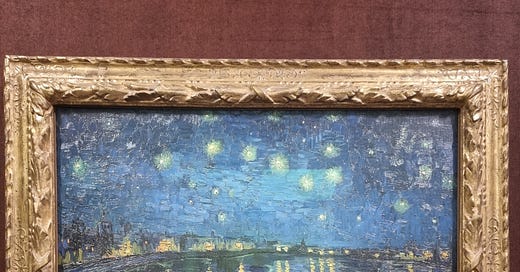



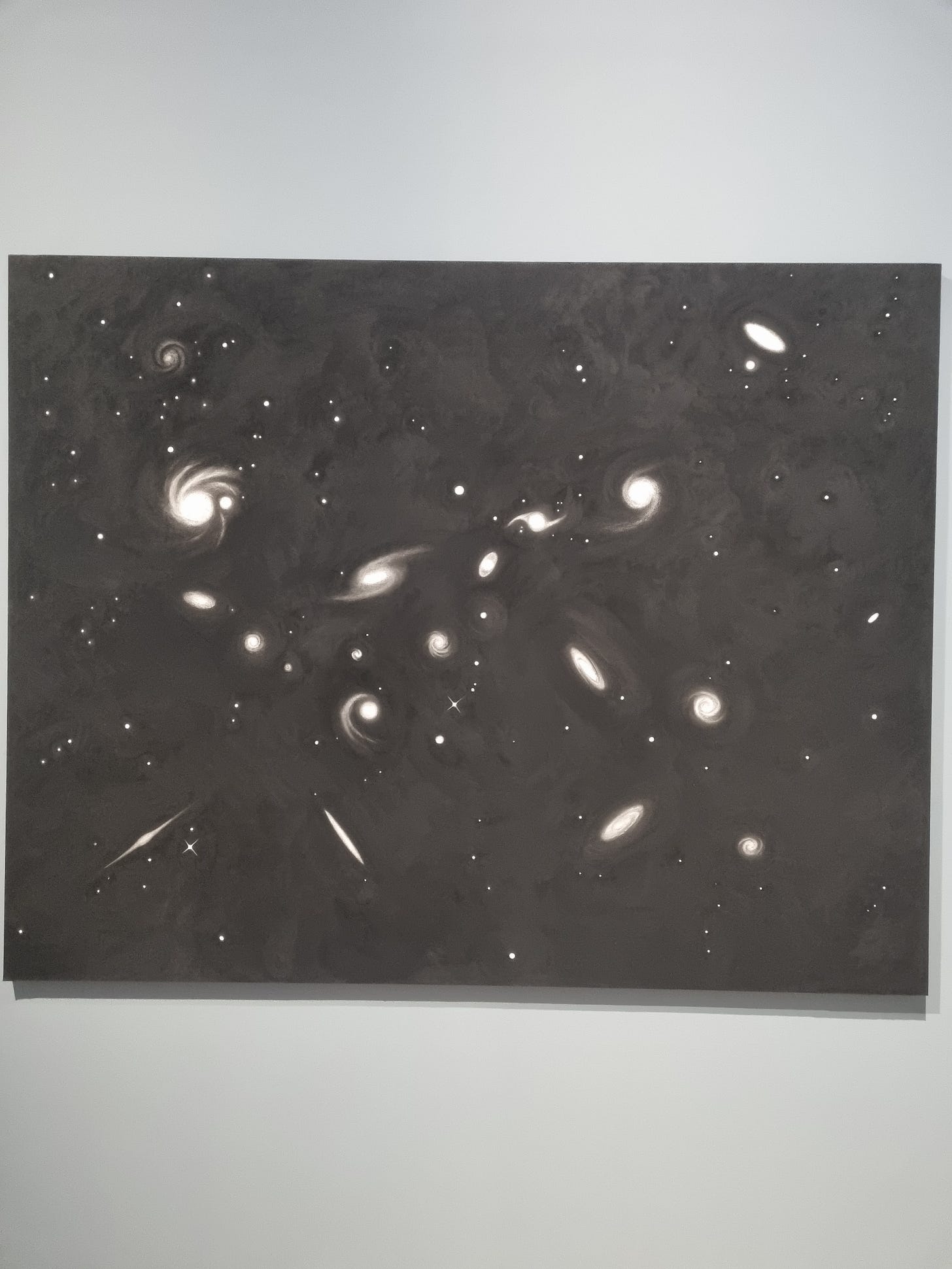
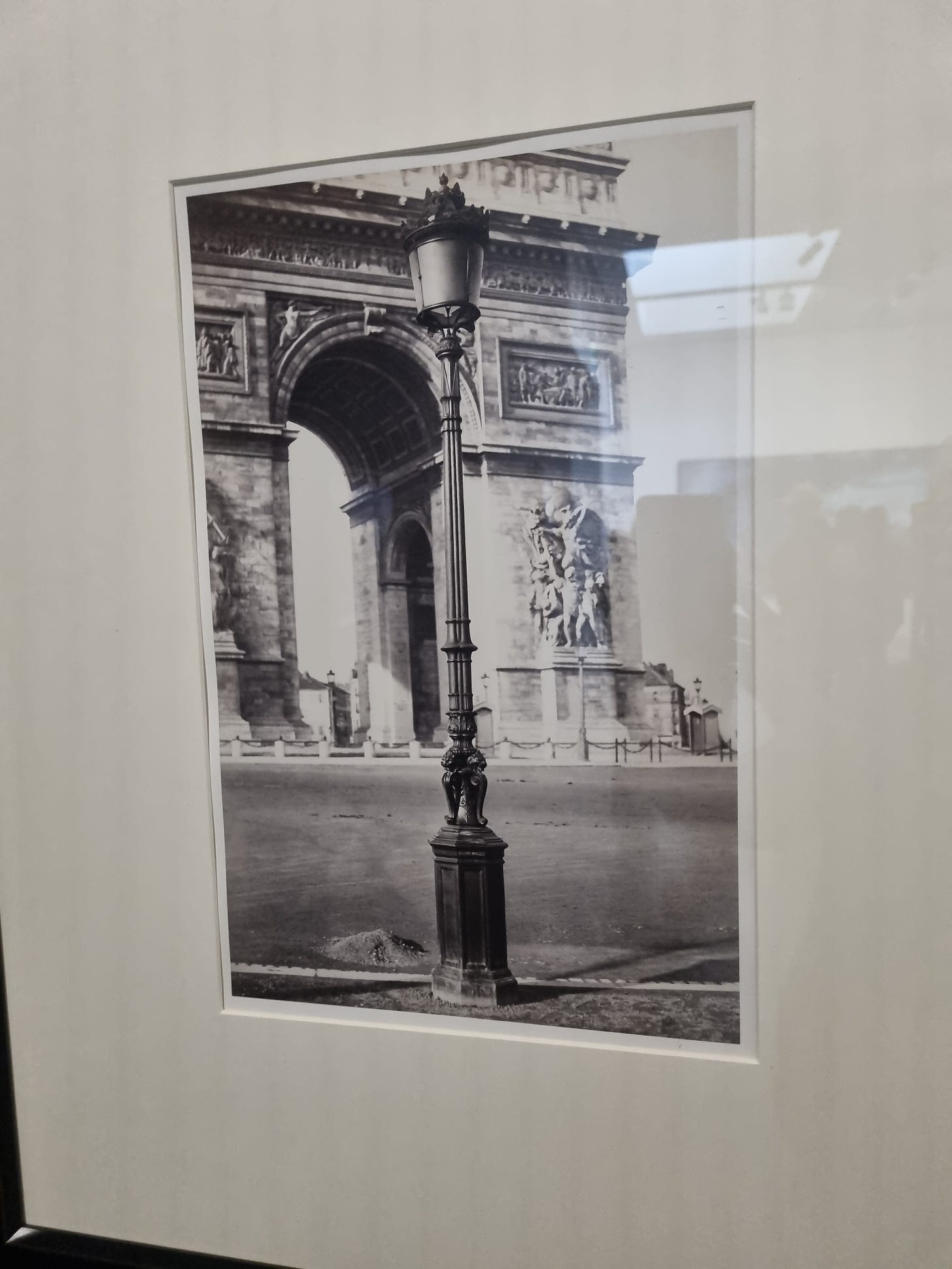
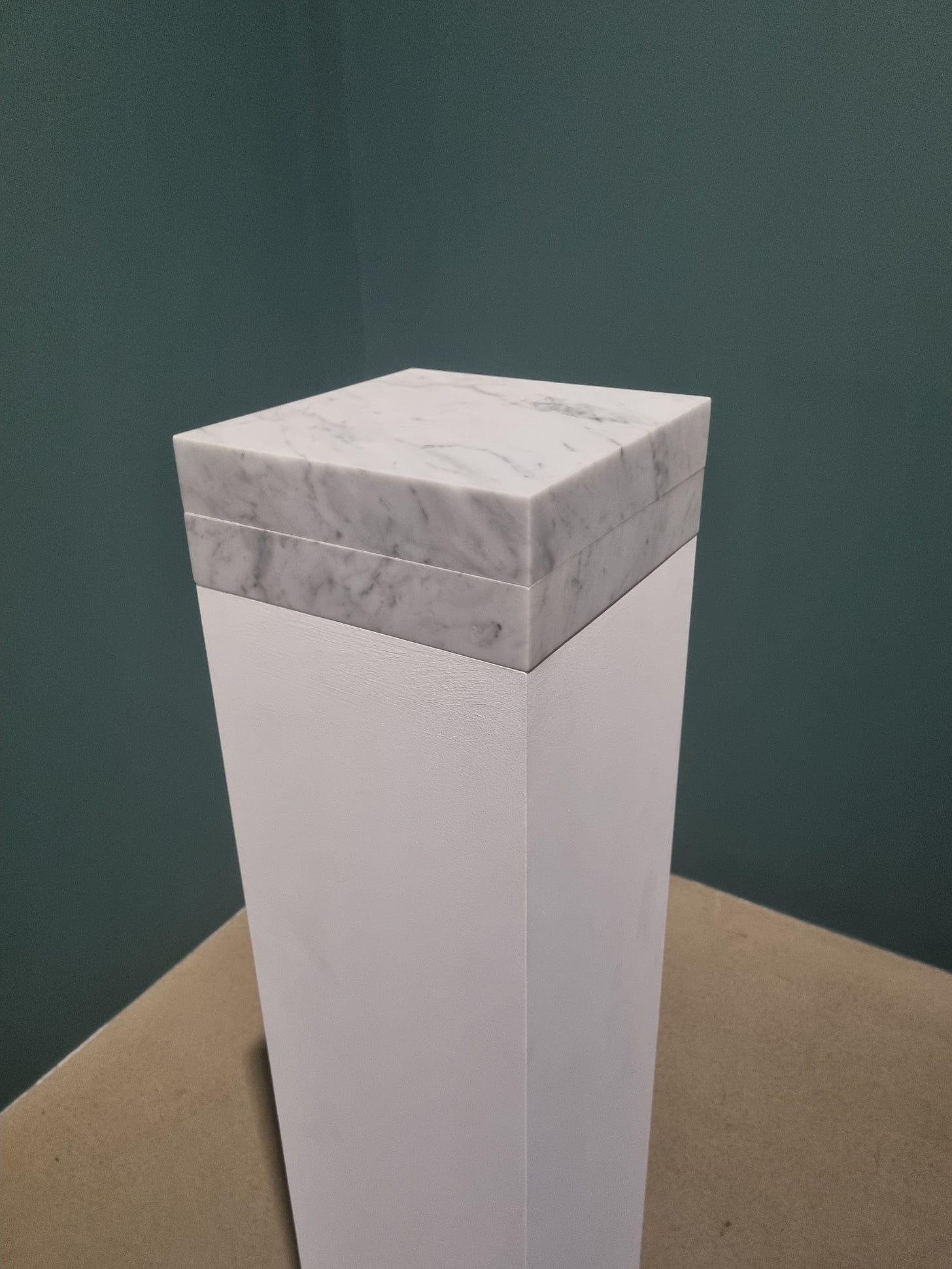


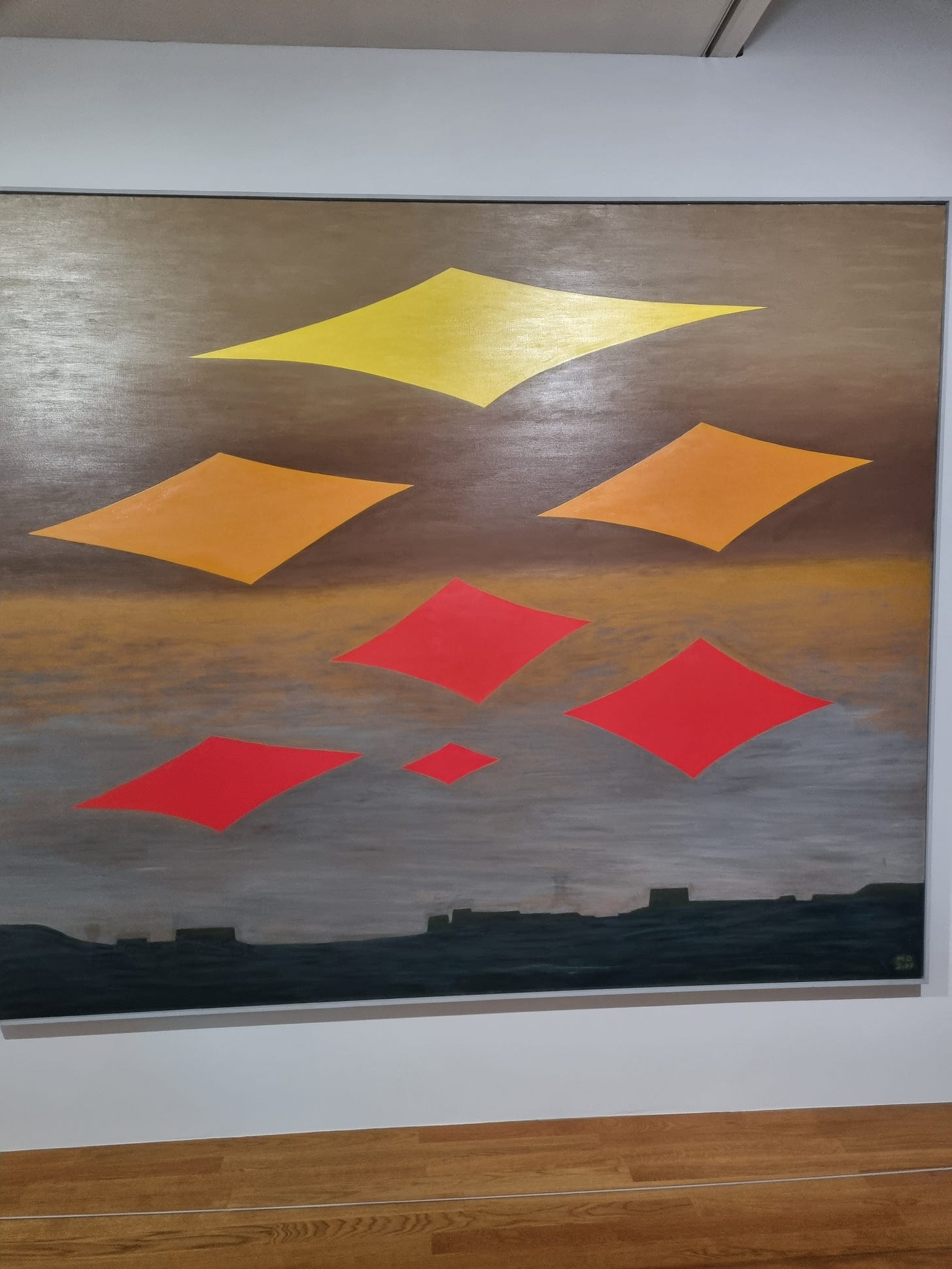
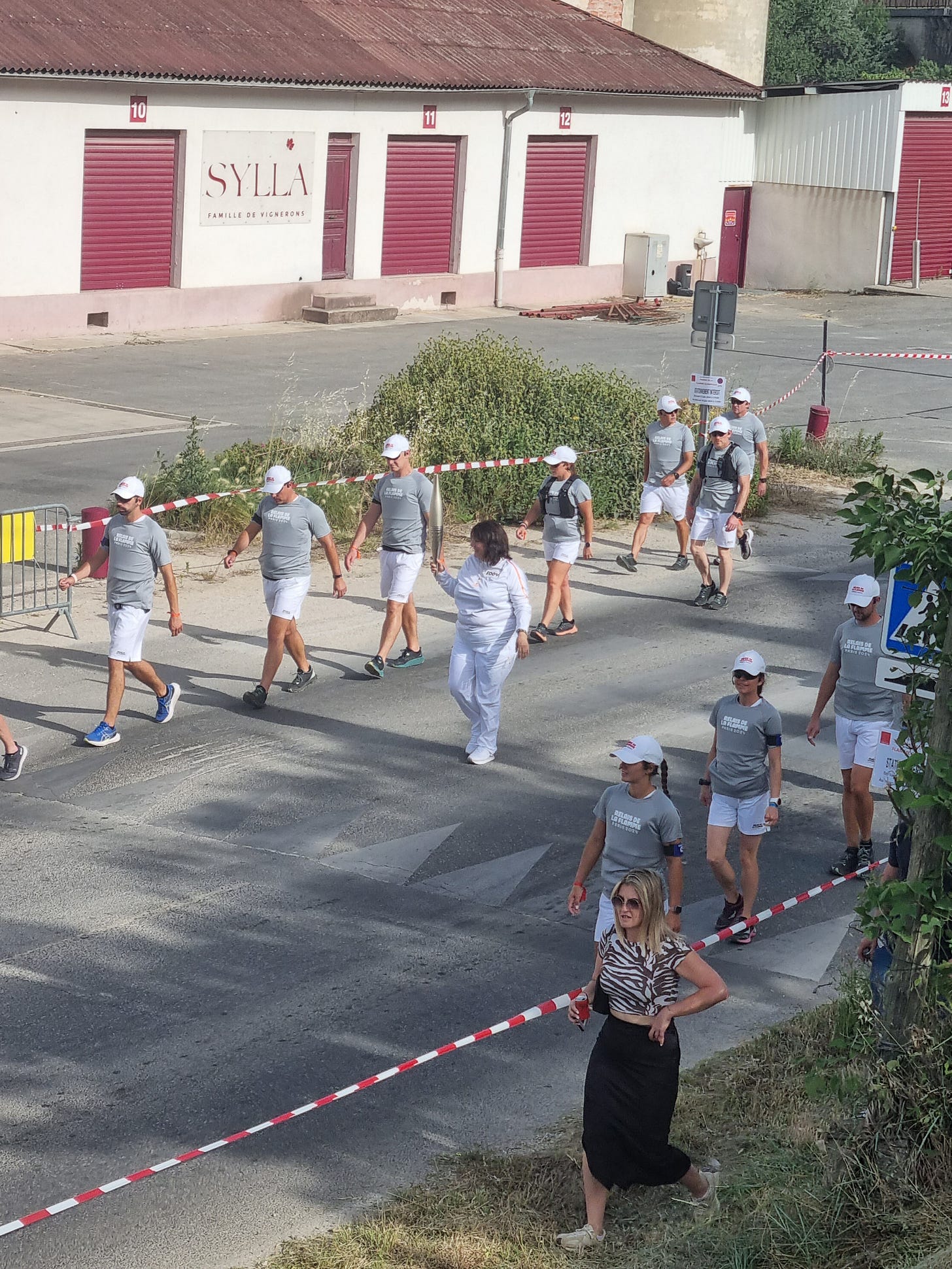
Don Maclean had a song called ‘Starry starry night’ which we used to sing on our boat as we sailed up the inlet to Starigrad in Croatia